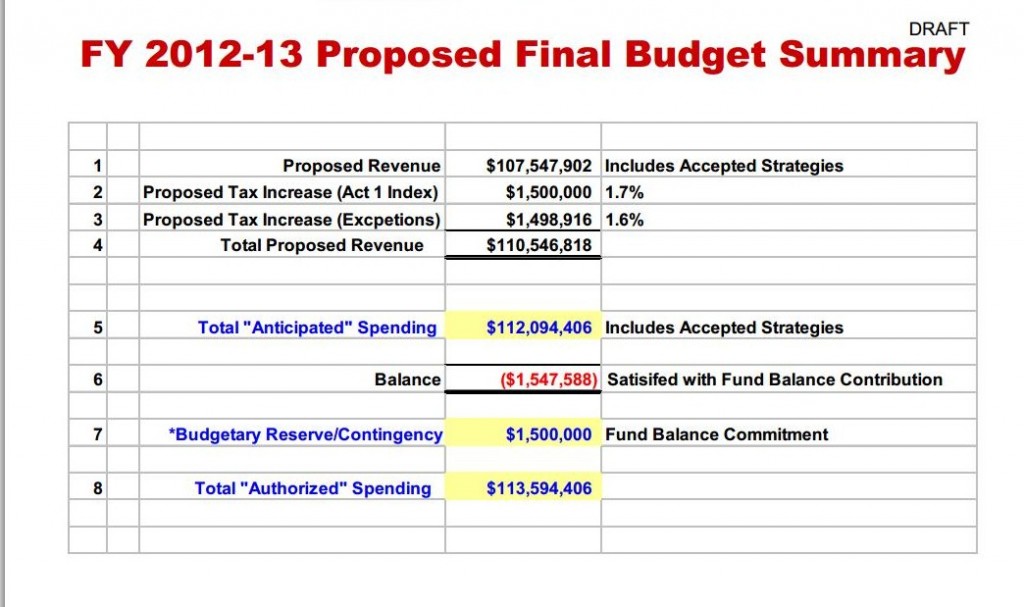Because of increasing empty storefronts and vacant corporate buildings, I wrote a post fourteen months ago asking if there was anything that could be done to attract new businesses and stimulate long-term, stable, economic growth in our community. In the February 2, 2011 article, I said,
I wonder if a township business task force would help . . . a volunteer group of local retired executives, small business owners, and corporate representatives. The group would meet monthly with a mission to spearhead ways to improve existing relationships and provide assistance and a resource for township businesses. This important support group for the business community could provide regular updates and suggestions to the Board of Supervisors. Just an idea . . .
A couple of months after this article appeared in Community Matters, the Board of Supervisors approved the creation of a Tredyffrin Business Development Advisory Council in April 2011. Supervisors Michele Kichline, Phil Donohue and Mike Heaberg held meetings with local companies, real estate and leasing representatives, etc. and designed a model for this volunteer advisory group.
Following the establishment of the criteria, community members wishing to participate were asked to submit letters of interest for consideration. From the 20 applications received, six residents were chosen to serve on the advisory board including Dan Fishbein, VP of BNY Mellon; Eric Kleppe, Turner Investments; Stanford Nishikawa, junk-bond analysis and private investor; Jim Sanborn, Gen Manager, Interstate & Ocean Transport Company; John Susanin, SSHH Real Estate and Bill Thomsen, Urban Engineers. In my November 15, 2011 Community Matters post, I provided the announcement of the advisory group members and their mission,
“This group was chosen for its cross section of business, strategic, planning and marketing expertise. They are highly skilled citizens who do not currently serve on our boards and commissions and have agreed to take a critical look at all aspects of the Township that relate to business development and business retention. This includes, but is not limited to zoning, transportation and marketing.”
In addition to supervisors Kichline, Donahue, Heaberg, and the six citizens listed above, four community liaison members were named to assist the group – Tory Snyder, Planning Commission; Beth Brake and Donna Shipman, Community Affairs and Small Business; and to represent the Paoli Business community, Dave Rowland.
As explained last fall by the supervisors, the group would work together for 4-6 months and then present their findings, which were to include recommendations and suggestions. As follow-up to their public report, it was intended that a long-term business advisory group would be created. It was recently announced that the advisory group is completing their study and will present their report at the supervisors meeting on June 18. I look forward to their report and am hopeful that there will be some positive news. However, I was troubled to learn yesterday from one of the named liaisons to the group – Donna Shipman that she was never contacted by the advisory group nor was she asked to provide input. According to Donna, she contacted several supervisors to express her concern but there was no follow-up from the advisory group.
This information is concerning … was Donna’s experience as a liaison to this advisory group an isolated situation? Were the other three liaison members involved and part of the process? As they conducted their research, who in the community was contacted by the advisory group? Did they speak with members of the small business community, corporate and real estate representatives, the township staff? I believe that there was potential for the Business Development Advisory Council to make a difference in the community through outreach and research … did the group achieve their mission?
We are all interested in the revitalization of our community and the current economic climate presents unique challenges. The political influence of elected leadership is critical to helping communities stay the course toward a vibrant economic future. Dedicated leadership is needed to raise awareness, help develop and communicate a common vision and motivate the community into action. Our elected officials have opportunities every day to effect change and promote a strategic vision of economic growth for their community growth. Is this a priority of our elected officials and if so, how successful are they in meeting the objective?
At a friend’s suggestion, I recently spent some time driving and walking around downtown Malvern. By the way, I would encourage everyone to take the time and visit this place … talk about economic redevelopment! Wow. It is so exciting to see all the changes and development, including adaptive re-use of existing buildings and new construction, in their town center. As an example, the original old Malvern fire company building, off King Street, was restored and retrofitted for mixed-use; the lower level commercial and upper level residential condominiums. Brick walkways, Victorian light posts and flowering planters line the downtown area the length of King Street; a total renaissance is occurring in this small borough, next-door to the west of us.
I want what Malvern has managed to achieve, for ‘our’ community. Malvern, Phoenixville, Wayne, West Chester, Media – all these places are faced with similar economic issues as ‘us’, yet these places are moving ahead in spite of the challenges … so why can’t we?
Looking forward to the public report from Tredyffrin Township’s Business Development Advisory Council on June 18; I want to hear the group’s ideas and suggestions on ways to revitalize and stimulate economic growth in our community.
